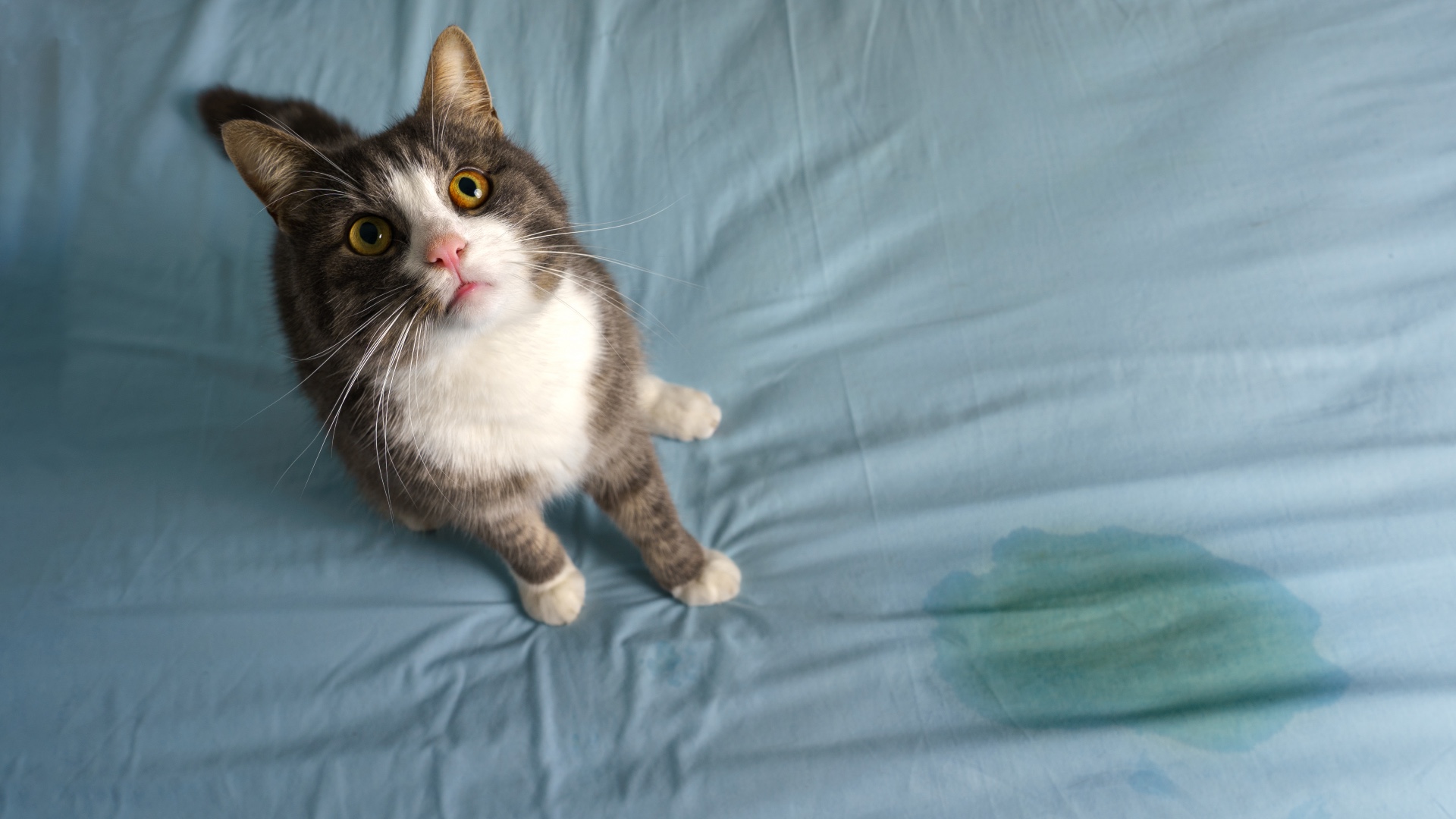
Cats defecating and urinating outside of their litter box is a common problem faced by many feline pet parents, and we understand what an unpleasant issue it is to be dealing with.
A cat peeing outside the litter box (or worse, pooping!) may seem like a deliberate behavior designed to upset you, but rest assured your kitty isn't trying to be difficult.
Arthritis in cats, as well as stress, anxiety, and medical issues like cystitis, can all cause a cat to do their business in places other than their litter box.
"Behavior issues are complex," explains registered vet technician and certified cat behavior consultant, Tabitha Kucera, "But just like cats need enrichment, water, and food, they also need an appropriate litter box setup from the start! This can help to prevent many issues and decrease stress for cats. "
Once you've ruled out an underlying health condition that could be driving your cat to pee and defecate outside their litter box, the next step is to ensure you have the right litter box setup. To help you do that, Kucera has put together what she calls her ABC's of litterboxes:
A = Accessible: The first thing Kucera recommends is making sure that the litter boxes you choose are easy for your cat to access. A good rule of thumb is to have one litter box per cat plus an extra one. So, if you have one cat, that means two litter boxes, if you have two cats, that means three litter boxes. Place them throughout your home, including all levels of a multilevel home.
"Many cats prefer to urinate in one box and defecate in another," explains Kucera. "Also, older cats and cats with medical issues that cause them to go to the bathroom frequently require easy access to a litter box."
B = Big: "Make sure the litter boxes are big enough to comfortably accommodate your cat," Kucera advises. "Litter boxes should be 1.5 times the length of your cat and your cat should be able to turn around in it - you wouldn't want to use an airplane sized bathroom all the time and neither does your cat." Check out our guide to the best cat litter box to help you find the perfect bathroom for your kitty.
C = Clean: Kucera says it's important that you clean your cat's litter box regularly and scoop it daily. "Dump and wash the litter boxes with a mild soap every 4-6 weeks and avoid strong, aversive cleaning agents, like bleach." Kucera recommends clumping clay litter as most cats prefer this over other types of cat litter and unscented and dust-free is also preferable. However, be led by your feline friend as to which litter to use. "Let your cat choose which litter they prefer. If your cat prefers a specific litter, don't change it."
If you have any concerns about your cat's toileting habits, or notice any other changes in behavior that have you worried, we recommend speaking with your vet who will be able to give your cat a full health check.







